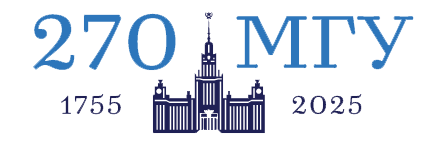You are here
Laboratory of Inverse Problems
Head of the laboratory: Gorkov Valery, Senior Research Fellow, PhD
The Laboratory of Inverse Problems was established in 1996 through integration of two laboratories: the lab of Mathematical methods of structural analysis and the lab of Methods for automation of an experiment. The idea of opening the Laboratory of Mathematical methods of structural analysis belonged to Academician A.N.Tikhonov. The Laboratory was established on the basis of the structural analysis group of the MSU Computing Center in 1982. In 2006, the laboratory team has joined the Laboratory of Statistical Modeling. From the earliest days of its existence, Prof. Boris Shchedrin is the chief and the leader of the Laboratory.
Staff members:
- Shchedrin Boris, Academician of the International Academy of Sciences for High School, Senior Research Fellow, Professor, Dr.Sc.
- Nikolay Andrushevsky, Senior Research Fellow, PhD
- Burova Elena, Senior Research Fellow, PhD
- Deyanov Ramil, Senior Research Fellow, PhD
- Podosenova Tatiana, Senior Research Fellow, PhD
- Belov Andrey, Research Fellow, PhD
- Lukyanova Lilya, Research Fellow, PhD
- Boldyreva Zoya, Leading Mathematician
- Mironov Andrey, Mathematician
- Semkin Viktor, Engineer
Special courses:
- Mathematical aspects of the physical experiments data processing by Prof. Shchedrin, 32 hours, autumn semester.
- Methods of global optimization by Prof. Shchedrin, 32 hours, autumn semester.
- Fundamentals of the statistical analysis using the computer program Statistics by Dr. Belov, 40 hours, autumn semester.
- Problems of avoiding collisions for linear control systems by Dr. Lukyanova, 32 hours, autumn semester.
Main Scientific directions:
The main direction of scientific activities of the Laboratory is the development of methods, algorithms and software packages for data processing and the interpretation of the diffraction experiment to study the structure and composition of substances: mono- and polycrystalline, high-temperature gas molecules, biological macromolecules and viruses, thin films, nano-objects, as well as numerical algorithms to ensure their operation: the spline approximation that takes into account a number of the precipice because of the finiteness of the field experiment, the integration of rapidly oscillating functions, separation of fused peaks, deterministic selection line background, regularization, global optimization methods.
Mathematical modeling and the related software for data analysis in space physics. Diffusion model of the strip X-ray detector with a bandpass absorber of superconducting material in the form of partial differential equations of parabolic type is analyzed. The model takes into account the diffusion of nonequilibrium quasiparticles, their capture of the tunnel junctions at the ends of the strip, the loss of quasiparticles at the edges of the strip, as well as the contribution of an electronic noise.
The research proceeds on developing intelligence tests which verify the mathematical preparedness of high school students, assess the level of their knowledge and improves mathematical models of processing test data.
In recent years, versions of a software package for computing inverse problems in management are developed. The methods for solving problems of collision avoidance for linear and nonlinear control systems are also considered.
The studied accomplished at the Laboratory are marked with diplomas and medals ENEA, the Diploma of the Supreme Soviet of the RSFSR, and the Moscow State Lomonosov Prize.
Recent publications:
• 2013
- Kaveev A.K., Kropotov G.I, Tsygankova E.A., Tzibizov I.A., Ganichev S.D., Danilov S.N., Kaveeva E.G., Zhdanov A.I., Ivanov A.A., Deyanov R.Z., Redlich B. Terahertz polarization conversion with quartz waveplate sets // Appl. Optics. 2013. 52. N 4. P. 60-69.
- Astaf'ev S.B., Shchedrin B.M., Yanusova L.G. Two-dimensional sections of the objective function as additional opportunities for reconstructing the density profile in reflectometry // Crystallography Reports. 2013. 58. N 2. P. 333-337.
- Deyanov R.Z., Ischenko A.A., Kamenev A.I., Lebedev A.M., Shchedrin B.M., Yagoubpour S.K. Implementation of the regularization and cumulant techniques for interpreting and modeling analytical signals // J. Surface Investigation. X-ray, Synchrotron and Neutron Techniques. 2013. 7. N 1. P. 41-45.
• 2012
- Andrianov V.A., Gorkov V.P. Response of the killed electrode in STJ X-ray detectors // J. Low Temp. Phys. 2012. 167. N 3-4. P. 410-415.
- Astaf'ev S.B., Shchedrin B.M., Yanusova L.G. Basic analysis of reflectometry data software package for the analysis of multilayered structures according to reflectometry data // Crystallography Reports. 2012. 57. N 1. P. 134-143.
- Belov A.G., Shchedrin B.M. Relative efficiency of OLS and LAV estimation // Computational Mathematics and Modeling. 2012. 23. N 3. P. 266-271.
- Gorkov V.P., Andrianov V.A. Two-dimensional model of a strip detector with two tunnel junctions // Computational Mathematics and Modeling. 2012. 23. N 1. P. 14-22.



